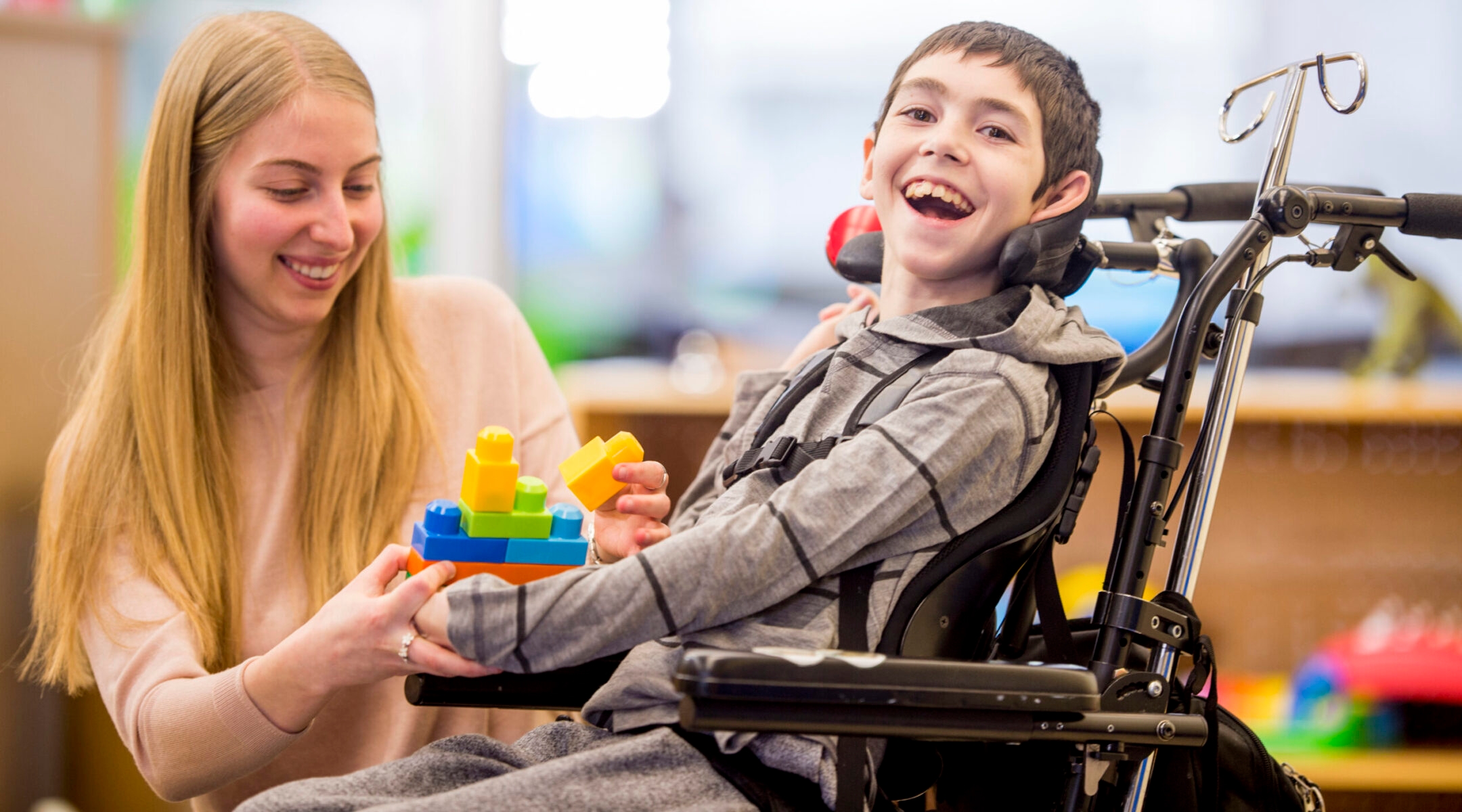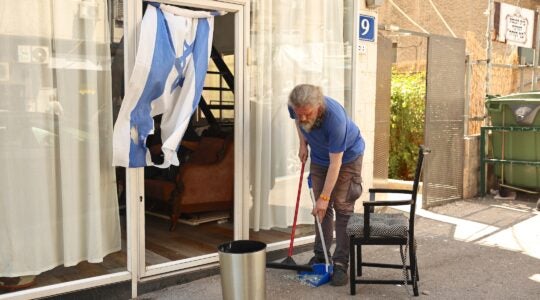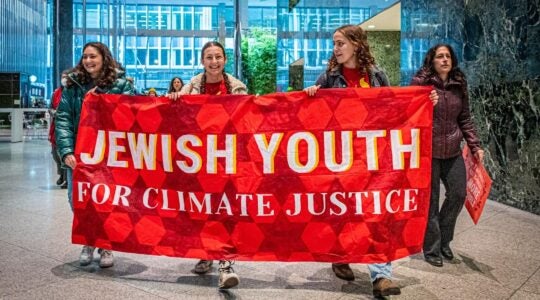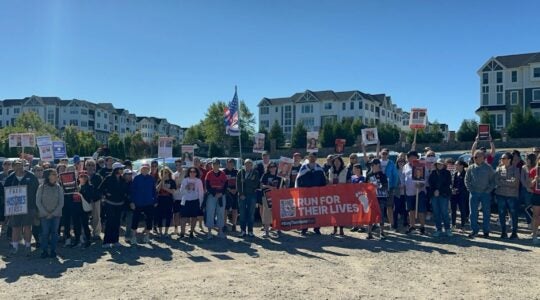(JTA) — Masks, quarantine, self-isolation, social distancing — these have become part of our everyday life. So has loneliness, misunderstanding, frustration and irritation. While these feelings may be new and unfamiliar territory for many people, they are quite familiar for those with disabilities and their families.
My eldest son, Avi, has autism. Avi has always been smart, playful, musical and energetic. But we have often had to opt out of communal activities because of how he interacts with the world around him.
In my professional work, I consult with synagogues and communities to build inclusive environments for all, and the sentiments I’m describing are nearly universal. We live in a world that expects people to interact and socialize in specific ways. When an individual is not able to conform to those norms, some families find it more tolerable to put on a mask — to pretend that they are satisfied with their level of inclusion within their communities — rather than expend the energy required to confront the problem themselves.
When individuals with disabilities and their families realize that acceptance, understanding and inclusion are not forthcoming, they are likely to opt out all together, choosing to self-isolate and quarantine rather than risk their dignity and emotional well-being by participating in communal activities that are not set up with them in mind. Many families spend holidays without family and friends because larger gatherings do not work for their child, and they often don’t attend parties and events.
As another mother of a child with autism shared, the only thing in her life that has changed since the pandemic began is the delivery of services for her child. Virtual sessions from home have replaced school and therapy, leaving the family with no respite from the round-the-clock care their child requires. When it comes to social outings and interactions, however, pre-pandemic life is exactly the same as pandemic life: They were isolated before and remain isolated now.
“Maybe now people will understand how we feel,” she mused.
As we are approaching a year in the “new normal,” many people express feeling “done” with COVID-19. They “can’t anymore” with the constant masking and quarantining, the conflicting guidelines and the lack of control over their lives. Others have chosen to throw caution to the wind and don’t bother with masks and precautions because they “need” to return to “regular life.”
Individuals with disabilities and their families don’t have the luxury of throwing up their hands or disregarding limitations. We all want to put the pandemic in our rearview mirror and we yearn to get back to “normal.” As we do, we must put our shared experiences to good use.
As we are reentering communities, activities, schools and services, can everyone take off their figurative masks? Can each person be their authentic self? Can everyone be accepted, included and valued for who they are?
We must work to build environments in which our friends, family and community members are comfortable sharing their social, emotional, behavioral and academic needs without feeling judged. When we achieve that openness, we will be providing every person the chance to emerge from isolation and make the choice to be a part of the community.
In my work at Temple Israel Center, we have found that organizing support groups and designating a contact person for inclusion, arranging disability awareness-building experiences and conversations, and developing an inclusion committee have given community members the sense that we want to accept and welcome those with differences and that their presence is important. Notice the emphasis on “want.” In my work at Matan, while guiding other synagogues on their inclusion journeys, I often remind communities that this work is ever-evolving. While none of this is a perfect science and we may miss the mark at times, we need to be committed to reflecting and improving with input from our partners in this effort.
There is no need to wait for restrictions to lift to begin this work. We can start by reaching out to individuals in our community with disabilities and their families. Ask how they are doing and if there’s anything they need. Make a connection. Let them know they are missed. In order for people to feel a sense of belonging, community and friendship, they need to know they are seen and their presence matters.
This can include having visual schedules to help a child navigate what to expect and when, or fidgets or alternative seating possibilities for those who learn and participate better when they are physically involved. When planning adult and children’s programming, keep in mind different learning styles and levels of engagement. Most of all, we must create a culture of welcome and connection where each program, service and experience has intentional avenues for building community and making personal connections. People feel most comfortable in places where they are known, welcome and understood while being their authentic self.
Simply “returning to normal” will leave individuals and their families to remain masked and isolated.
Let’s start to think about not going back to normal. Let’s figure out how we move forward with inclusive efforts, both as organizations and in our personal relationships with friends and family. If we can commit to raising our standards of inclusion, the post-pandemic sigh of relief will be that much more significant for everyone.
JTA has documented Jewish history in real-time for over a century. Keep our journalism strong by joining us in supporting independent, award-winning reporting.







